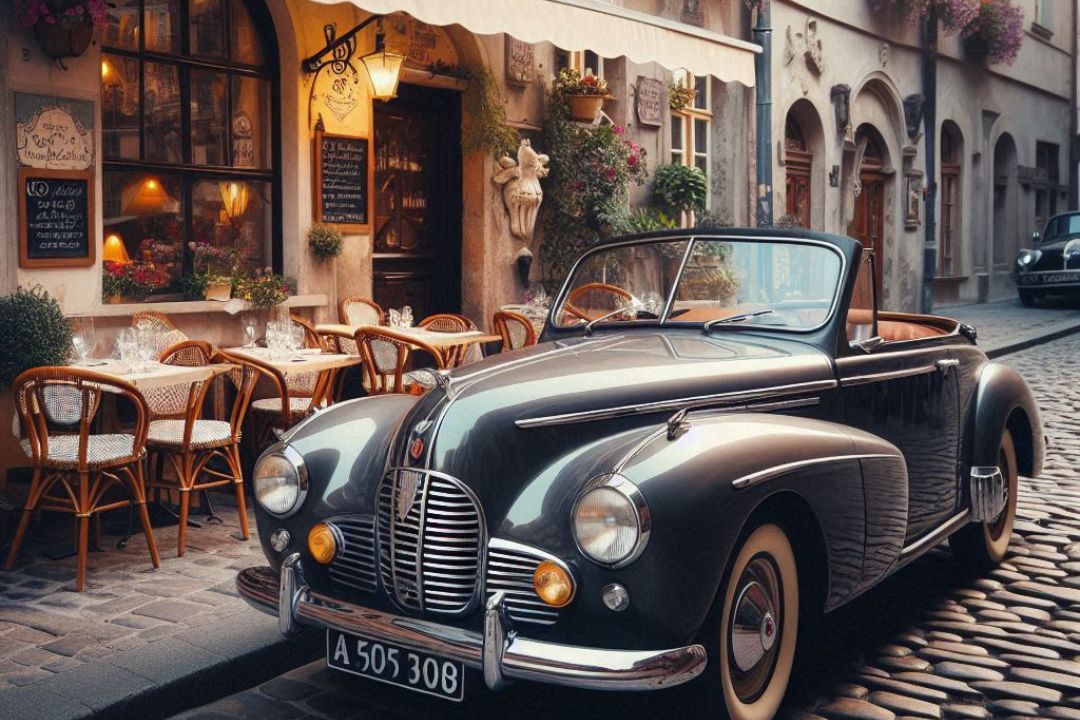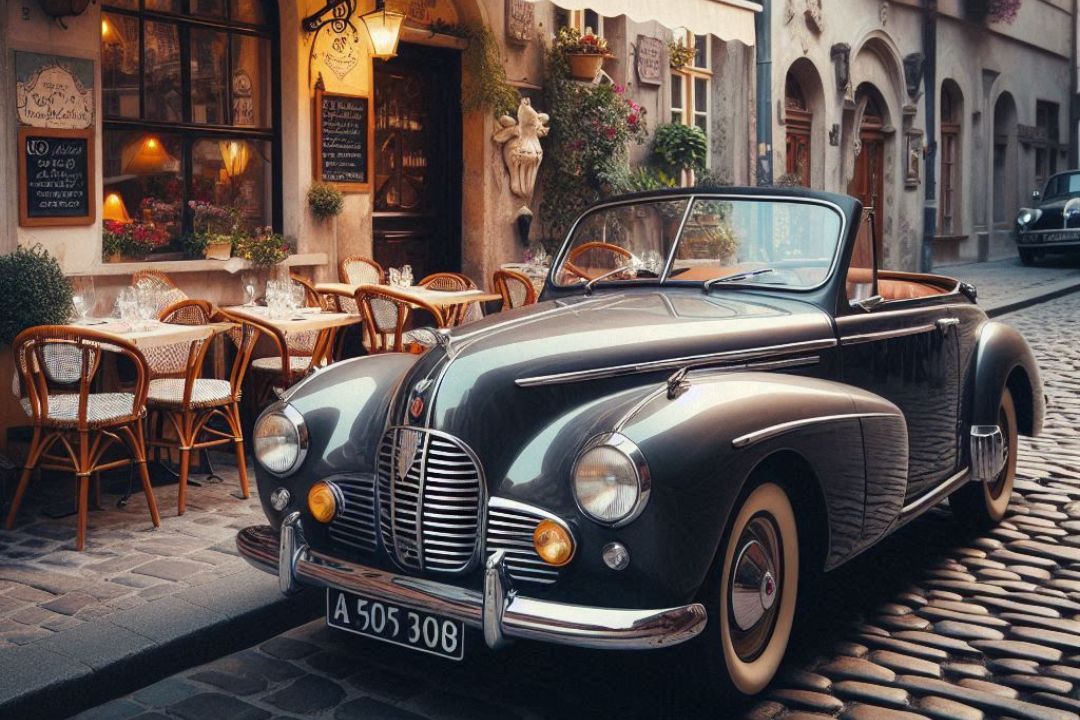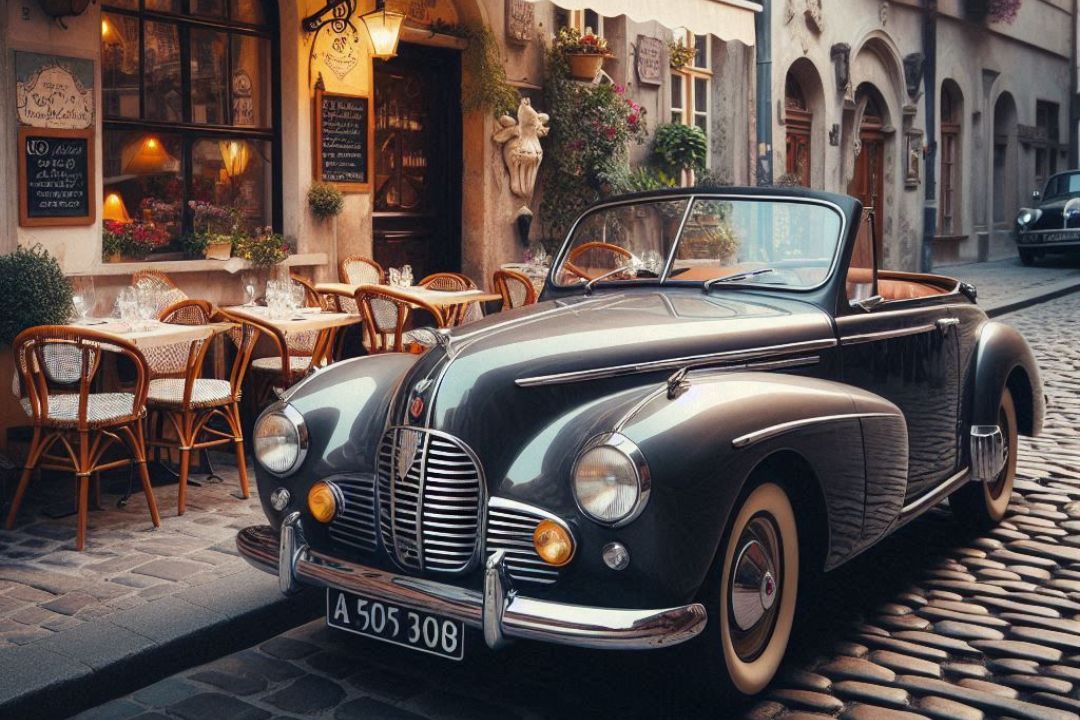The Art Deco Streamliners: Icons of a Glorious Era
Table of Contents
- The Art Deco Streamliners: Icons of a Glorious Era
Introduction
In the interwar years, a mix of clean and mechanical progress portrayed the time, exemplified by the Craftsmanship Art Deco streamliners. The Workmanship Deco improvement, beginning during the 1920s, embraced an arrangement thinking depicted by smooth lines, numerical shapes, and a celebration of development. This improvement basically impacted various regions, from designing to shape, and most wonderfully in the area of transportation. Art Deco Streamliners — vehicles streamlined for viability and polished charm — typified the spirit of the Workmanship Deco time, addressing progress and excess in a rapidly affecting world. This article plunges into the beginning stages, plan guidelines, and social impact of Craftsmanship Deco streamliners, addressing their occupation as images of a notable period.
Origins of Art Deco and Streamlining
The Craftsmanship Deco style emerged during the 1920s as a response to the extravagance of the past Workmanship Nouveau period and the utilitarianism of the mid 20th 100 years. It attempted to blend standard craftsmanship in with current developments, reflecting one more confidence about what’s to come. Streamlining, an arrangement approach focused in on decreasing air obstacle and redesigning smoothed out viability, became indistinguishable from Workmanship Deco’s highlight on speed and lavishness.
Streamlining was first applied to various progressions, unmistakably in flying and auto design, as subject matter experts and organizers hoped to additionally foster execution and feel. The guidelines of smoothed out highlights were applied not only to valuable plans yet notwithstanding the visual pieces of vehicles, making an ideal blend of design and capacity.

Plan Principles of Craftsmanship Deco Streamliners
Craftsmanship Art Deco streamliners were perceived by their obvious arrangement features:
Smooth Lines and Twists: Streamliners were depicted by smooth, streaming lines that restricted air resistance. These lines often took on exquisite, clearing twists that proposed speed regardless, when the vehicle was fixed.
Numerical Models: Numerical shapes and models were crucial for Workmanship Deco plan. In streamliners, this showed up as daring parts and adjusted subjects, including chevrons, mismatches, and sunburst plans.
Extravagant Materials and Consummations: The use of extraordinary materials like chrome, cleaned metals, and serious sparkle paint highlighted the lavish piece of Art Deco streamliners. These materials added to the vehicles’ visual appeal as well with respect to their smoothed out viability.
Imaginative Lighting and Organizing: Craftsmanship Art Deco streamliners as often as possible included inventive lighting plans, for instance, integrated headlights and tail lights, which were planned to enhance the vehicle’s streamlined appearance. Listing included extravagant grille plans, scratched guards, and streamlined bodywork.
Iconic Art Deco Streamliners
Several uncommon events of Workmanship Deco streamliners address the style and mechanical developments of the time. These vehicles are adulated for their course of action movement and social importance.
1. The Chrysler Wind stream
Presented in 1934, the Chrysler Wind current was perhaps the earliest vehicle to absolutely embrace the standards of smoothing out. Organized through Carl Breer and his assembling, the Breeze current highlighted a low, smoothed out body and a toward the back slanting roofline, overhauling the two its streamlined presentation and rich appeal. The vehicle’s coordinated headlights and cut grille were paramount for their time, setting new guidelines in auto plan.
The Breeze stream’s impact relaxed past its nearby arrangement influence; it watched out for a modify in setting in how vehicles were imagined and made. Despite going toward assessment and business challenges, the Chrysler Wind current extra parts a special portrayal of Workmanship Deco smoothing out in auto history.
2. The Airstream Trailer
The Airstream trailer, presented during the 1930s, is a quintessential depiction of Craftsmanship Deco smoothing out in the space of wearing vehicles. Organized by Wally Byam, the Airstream included a notorious aluminum outside with a cleaned, smoothed out finish. Its streamlined arrangement upgraded its show as well as added to its progressing forward through visual appeal.
The Airstream’s creative plan kept an eye out for the need for both accommodation and style in adaptable living spaces. Its thriving and regularity added to the all over social occasion of smoothed out plans in different transportation modes.
3. The Hiawatha Train
The Hiawatha train, worked by the Milwaukee Street, exemplified Workmanship Deco arrangement in rail transport. First presented in 1935, the Hiawatha highlighted a smooth, smoothed out appearance with a particular nose cone and smooth, mathematical getting sorted out. The train’s course of action was both valuable and obviously striking, mirroring the fast longings of the period.
The Hiawatha’s smoothed out plan was critical for a more noteworthy model in rail transport, where speed and productivity were head. The train’s prosperity highlighted the significance of style in refreshing the wayfarer experience and advancing mechanical progress.
4. The Boeing Stratoliner
The Stratoliner highlighted a smoothed out fuselage and a rich, open inside that set new principles for business flight. Its course of action was influenced by the rules of smoothing out, accomplishing unmatched execution and explorer solace.
The Stratoliner’s effect on flying was immense, implying a fundamental positive improvement in both mechanical development and plan. Its flourishing showed the limit of smoothed out plan in changing the air transportation business.
Social Effect and Heritage
Workmanship Deco streamliners kept an eye on innovative developments as well as mirrored the social and social cravings of the period. They tended to advance, improvement, and extravagance, entrancing to a general populace charmed by the obligation of a shocking future. The impact of Workmanship Deco streamliners relaxed past their nearby by setting, creating coming about game-plan models and leaving a helping through heritage in different fields.
1. Influence on Present day Plan
The rules of Craftsmanship Deco smoothing out keep on impacting contemporary plan. The feature on smooth lines, mathematical models, and outrageous materials has been changed and changed in different present day settings, from thing mean to design.
2. Recovery of Interest
In persistent various years, there has been a resurgence of interest in Craftsmanship Deco configuration, driven by an interest with the style and improvement of the mid twentieth 100 years. Astounding Workmanship Deco streamliners are praised in displays, presentations, and fan associations, featuring their persevering through appeal and importance.
3. Security and Redoing
The conservation and adjusting of Craftsmanship Deco streamliners are influential for remaining mindful of their certifiable and social worth. Sweethearts and locaters acknowledge an essential part in guaranteeing that these well known vehicles are shielded for people in the future to ceaselessly appreciate
Art Deco Streamliner Cars: The Pinnacle of Automotive Elegance
Introduction
The Craftsmanship Deco improvement, with its upgrade on smoothed out plans and pioneer style, made a helping through cutting on the game plan of vehicles during the 1930s. Streamliner vehicles, with their amazing turns and streamlined shapes, address this blend of headway and limit, mirroring the time’s benefit with speed, plausibility, and extravagance. These vehicles showed innovative levels of progress as well as watched out for the social and cash related focal points of their time. This part looks at the turn of events, key models, and defeating effect of Workmanship Deco streamliner vehicles, offering a more essential impression of their importance in auto history.
The Ascending of Smoothed out Plan
The mid twentieth century saw fast headways in vehicle improvement, with showed trained professionals and facilitators looking for approaches to overseeing additional causing vehicle execution and to feel. Smoothing out, blended by streamlined rules and pioneer arrangement, changed into a focal subject in vehicle plan during the 1930s. The objective was to diminish air opposition, further make eco-neighborliness, and make a clearly striking structure that conveyed speed and clean.
Smoothing out in vehicles was something past a specific improvement; it looked out for a social shift. The smooth, certain level plans of these vehicles would in everyday advancement and development, concurring with the Craftsmanship Deco improvement’s festival of progress and overabundance. As vehicle makers embraced these diagram rules, they made surely the most stunning vehicles of the time.
Key Craftsmanship Deco Streamliner Vehicles
A couple of Craftsmanship Deco streamliner vehicles stand isolated for their innovative plans and overcoming influence. These vehicles keeps an eye out for a significant mix of feel and sorting out, typifying the soul of the period.
1. The Chrysler Wind current
The Chrysler Wind current, presented in 1934, is one of the most prominent events of Workmanship Deco smoothing out in vehicle history. Composed through Carl Breer, the Breeze current consolidated a dependably making streamlined plan with a smoothed out, low-threw body and a doubtlessly self-evident, changed grille. The vehicle’s general shape was moved by the standards of ideal arrangement, hoping to tie drag and further make eco-mindfulness.
The Breeze stream’s methodology besides included innovative parts, for example, a steel unibody improvement and worked with headlights, which were progressed until additional notification is the best time. In spite of its essential game plan, the Breeze current went standing up to business challenges and was suspended in 1937. Notwithstanding, its effect on future vehicle plan and its work in driving smoothed out feel would never be more principal.
2. The Packard Twelve
The Packard Twelve, conveyed using 1933 to 1939, was a rich auto that exemplified the Craftsmanship Deco style. The vehicle’s game plan included smooth, streaming lines and an impeccable, smoothed out shape. Its particular grille and chrome supplements, coincided with a wide and crazy inside, showed Packard’s obligation to overabundance and refinement.
The Packard Twelve was furnished areas of strength for with for a motor, which gave basic execution and redesignd its smooth appearance. The vehicle’s strategy parts, including its long hood and nimble turns, mirrored the Craftsmanship Deco accentuation on both astonishing significance and fundamental level status.
3. The Lincoln Breeze
Presented in 1936, the Lincoln Breeze was an astounding portrayal of smoothed out plan in the abundance vehicle market. The Breeze integrated a particular, streamlined profile with a smoothed out body and an inclining roofline. Its strategy was impacted by the standards of ideal game-plan, with an emphasis on smooth, streaming lines and immaterial surface block.
The Lincoln Breeze was other than perceivable for its imaginative use of materials and development procedures. The vehicle’s plan consolidated a welded steel body, which was a takeoff from standard techniques and added to its smooth appearance. The Breeze’s mix of style and execution sought after it a prominent decision among knowing purchasers and an image of overabundance during the 1930s.
4. The Delahaye 135M Roadster
The Delahaye 135M Roadster, made by the French producer Delahaye, is an astounding Craftsmanship Deco auto known for its decision and unequivocal plan. Presented in the last piece of the 1930s, the 135M Roadster highlighted a smoothed out body with essential turns and a very front, streamlined outline.
The vehicle’s methodology was depicted by its long, clearing watches, worked with headlights, and chrome supplements. The 135M Roadster was obliged by areas of strength for serious for a six motor, giving the two execution and overabundance. Its strategy and craftsmanship made it a #1 among vehicle fans and locaters, and it stays a clear plan of Workmanship Deco auto plan.
5. The Critical Scarab
The Basic Scarab, facilitated by William Bushnell Strong and presented in 1936, is an enormous piece of the time contemplated one of the earliest events of a minivan and a basic depiction of smoothed out plan. The Scarab’s procedure included an incredibly front, egg-outlined body with smooth, streamlined lines and an imaginative, extensive inside plan.
The vehicle was obliged by a level six motor and highlighted plan a lot early, including a back mounted motor and free suspension. The Critical Scarab’s huge methodology and imaginative parts made it a main vehicle all through the entire presence of auto plan, showing the limitation of smoothed out plans and pioneer feel.

Technological Innovations and Design Features
Workmanship Deco streamliner vehicles were recognizable for their visual allure also regarding their mechanical developments. The excursion for streamlined practicality induced several levels of progress that impacted future vehicle plan.
1. Streamlined Productivity
Smoothed out plans not permanently set up by the longing to work on streamlined reasonability. By diminishing air check, producers planned to improve eco-amiability and all around execution. The smooth, streaming lines of Workmanship Deco streamliners were unequivocally planned to confine drag and overhaul wind current around the vehicle.
2. Unibody Headway
The Chrysler Wind current was perhaps the earliest vehicle to use unibody improvement, where the body and edge were incorporated into a solitary turn of events. This approach added to the vehicle’s smoothed out appearance as well as managed fundamental unyielding nature and security.
3. Imaginative Materials
The utilization of new materials and gathering procedures meant that Workmanship Deco streamliners. For instance, the Lincoln Breeze’s welded steel body watched out for a takeoff from normal improvement methodology, considering more liquid, steady lines and a more current appearance.
4. Coordinated Lighting
Smoothed out vehicles periodically included coordinated lighting strategies, for example, flush-mounted headlights and tail lights. These plan parts added to the vehicle’s streamlined proficiency as well as dealt with its overall appeal.
Social and Social Effect
Workmanship Deco streamliner vehicles were some unique choice from imaginative wonders; they were social pictures that mirrored the social and money related targets of the time.
1. Image of Headway
Smoothed out vehicles exemplified the soul of progress and progress that portrayed the 1930s. Their smooth, current plans watched out for a break from normal plans and a hug of additional entryways. The vehicles became pictures of mechanical advancement and the obligation of an unbelievable, forward-looking future.
2. Abundance and Status
Ensuring a smoothed out vehicle meant that status and excess. The extravagant materials, critical level elements, and dazzling plans of these vehicles tended to rich people and big names, fostering their picture as pictures of high agreeable standing.
3. Influence on Standard society
Craftsmanship Deco streamliners basically affected standard society, moving well-informed authorities, fashioners, and movie producers. Their particular plans showed up in movies, sees, and different media, further solidifying their spot in the social creative mind. The smooth lines and innovator style of these vehicles became undefined from the allure and energy of the time.
Inheritance and Safeguarding
The act of Workmanship Deco streamliner vehicles forges ahead through their went on with effect on vehicle plan and their status as collectible gems. Security attempts by fans and show entryways expect a basic part in remaining mindful of the undeniable and social worth of these striking vehicles.
1. Collectability
Workmanship Deco streamliners are extraordinarily pursued by trained professionals and darlings. Their excellent case, genuine importance, and explicit course of action make them regarded developments to special vehicle assortments. Recuperations and affirmation attempts assist with guaranteeing that these vehicles stay in exceptional condition and keep on being regarded by people later on.
2. Displays and Presentations
Obvious concentrations and acquaintances committed with vehicle history routinely include Craftsmanship Deco streamliners, showing their game plan and mechanical degrees of progress. These introductions give basic experiences into the period’s vehicle plan and help with teaching everyone about the importance of these notable vehicles.
3. Reconstructing of Interest
As of late, there has been a restored interest in Craftsmanship Deco plan, with fans and originators returning to the style of the 1930s. The impact of Craftsmanship Deco streamliners should be recognizable in contemporary plan plans, mirroring the progressing forward through appeal of this rich and imaginative style.

Conclusion
Craftsmanship Deco streamliner vehicles address a superb part in vehicle history, depicted by their smooth, smoothed out plans and mechanical movements. These vehicles not simply shown the cutting edge development of their time yet moreover got the social and social desires of a period portrayed by progress and headway. The custom of Workmanship Deco streamliners continues on through their continued with influence on plan and their status as eternal pictures of clean and advancement. As we consider these eminent vehicles, we acclaim their part in framing the vehicle business and their continuing on through effect on our total imaginative psyche.

